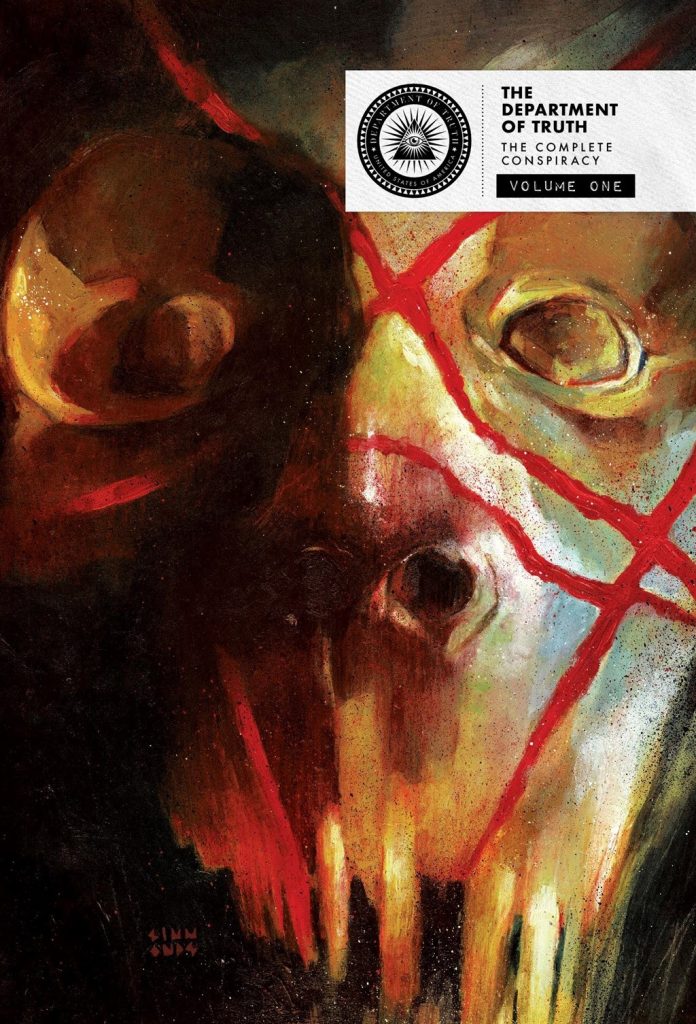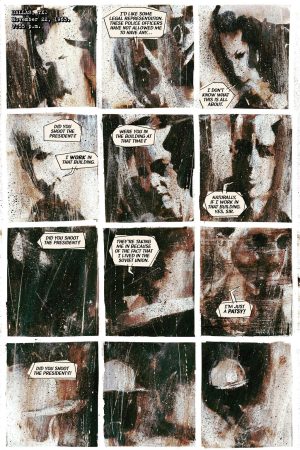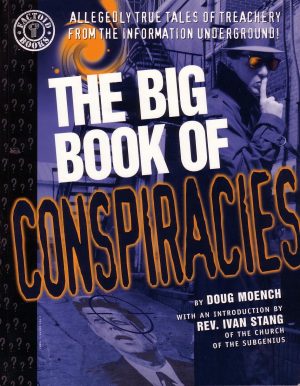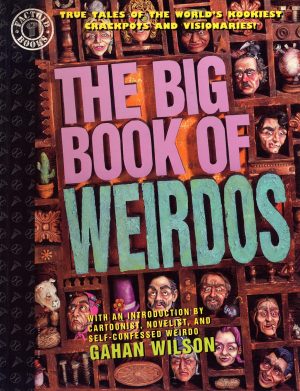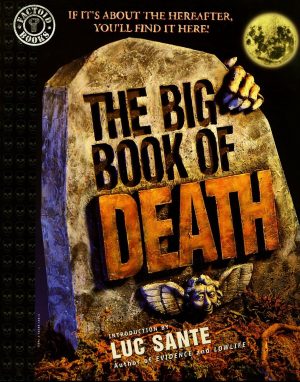Review by Frank Plowright
This is a bizarre creative choice, or a conspiracy. Take your pick. As published in in trade paperback there are four volumes of The Department of Truth, yet this Complete Conspiracy only compiles three. You can point out that it’s subtitled Volume One, yet there’s only one paperback not included. Is the truth being kept from hardback readers?
At its simplest, The Department of Truth is James Tynion IV and primary artistic collaborator Martin Simmonds disappearing down the rabbit holes of conspiracy theory, presenting a hypothesis that reveals them all as true and ties them all together. Let it be said, that’s an achievement in itself. It starts with Lee Harvey Oswald’s interrogation in 1963, and then moves to the present day of conspiracy researcher Cole Turner being questioned.
The obvious touchstone here is fondly remembered 1990s TV show The X-Files, although with slightly less emphasis on aliens and more on swearing. The aliens are part of the picture, but not the primary motivating force, which is rooted in occult theory, although Tynion’s own creation. His big idea is that conspiracy can rewrite reality, and it just takes enough people to believe the Earth is flat and the Earth will be reshaped to accommodate a new truth. The Department of Truth is there to stop that happening. They operate covertly and are a law unto themselves like other US security agencies, but more subtle with their manipulations.
Because nothing is solid, Simmonds presents the art through a veil of visual static. The truth is there, but not always with absolute clarity. It’s an impressive performance, obviously influenced by peak period Bill Sienkiewicz from the late 1980s, yet with added digital wizardry, and as the series continues Simmonds becomes more confident and more ambitious. The sample art is the opening page, and there are plenty more like it.
However, as the series continues it seems Tynion has front ended the fascination, and it’s the diversions that are more interesting, while the main story very much becomes a matter of Tynion intent on displaying his research. When Cole is taken on a field trip by another agent, the result is a verbose hectoring about a vast array of strange events and how they’re tied together. It’s smart, but dull.
Holding greater appeal are the single chapters drawn by other artists providing background information. All have a unique visual signature and all offer enlightenment as to aspects of The Truth. It’s the chapter featuring the lurid painted illustrations of David Romero that has the greatest bearing on the what’s happening, supplying three building blocks of the bigger picture.
The Department of Truth arrived with a jolt and immediately picked up several Eisner Award nominations, all well deserved for recognising old stories given an original twist in tempestuous times. Yet while the wheels didn’t entirely come off, they were considerably loosened thereafter. If you’d prefer to dabble rather than jump right in, this content is available in paperback as The End of the World, The City Upon a Hill and Free Country.
